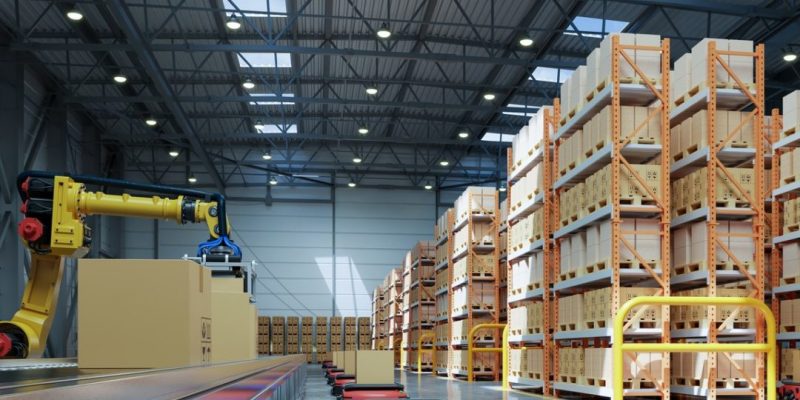In today’s fast-paced business environment, efficiency and productivity are crucial for success. Warehouse automation has emerged as a transformative solution, enabling businesses to streamline their operations, reduce costs, and enhance overall productivity. By leveraging advanced technologies, companies can revolutionize their warehouse management processes, leading to significant growth and competitive advantages.
1. Increased Efficiency and Productivity
One of the primary benefits of warehouse automation is the significant boost in efficiency and productivity. Traditional manual processes are often time-consuming and prone to errors. Automation technologies, such as automated guided vehicles (AGVs), robotic arms can perform repetitive tasks with precision and speed. These technologies can handle tasks such as packing, and sorting, allowing workers to focus on more complex and value-added activities.
Automated systems can operate 24/7, ensuring continuous workflow and eliminating downtime. This leads to faster order fulfillment, reduced lead times, and improved customer satisfaction. By optimizing warehouse operations, businesses can handle larger volumes of orders without compromising on quality or accuracy.
2. Cost Reduction
Implementing warehouse automation can result in substantial cost savings. While the initial investment may be significant, the long-term benefits far outweigh the costs. Automated systems can reduce labor costs by minimizing the need for manual labor in repetitive and physically demanding tasks. This not only lowers labor expenses but also reduces the risk of workplace injuries, leading to lower insurance premiums and workers’ compensation claims.
Moreover, automation technologies can optimize space utilization within the warehouse. Automated storage and retrieval systems (AS/RS) and conveyor products and solutions can maximize vertical storage space, allowing businesses to store more inventory in the same footprint. This eliminates the need for costly warehouse expansions and reduces real estate expenses.
3. Improved Accuracy and Inventory Management
Accuracy in inventory management is critical for businesses to meet customer demands and avoid stockouts or overstock situations. Manual inventory management is prone to errors, leading to discrepancies and inefficiencies. Warehouse automation technologies, such as barcode scanning, RFID systems ensure accurate and real-time tracking of inventory.
Automated systems can perform cycle counts and stock audits with precision, reducing the chances of human error. This leads to better inventory visibility, allowing businesses to optimize stock levels, reduce excess inventory, and improve order accuracy. With accurate inventory data, businesses can make informed decisions regarding procurement, production, and sales, ultimately driving profitability.
4. Enhanced Flexibility and Scalability
In today’s rapidly changing business environment, flexibility and scalability are paramount for sustained growth and competitiveness. Warehouse automation plays a pivotal role in equipping businesses with the agility needed to navigate dynamic market conditions and seasonal variations. Automated systems offer inherent flexibility by virtue of their ability to be swiftly reconfigured and scaled to meet evolving operational needs.
For example, robotic systems deployed in automated warehouses can be programmatically adapted to perform a diverse array of tasks. This versatility empowers businesses to seamlessly transition between different operations, whether it’s picking, packing, sorting, or even assembly tasks. Such adaptability enables organizations to promptly adjust their workflows in response to shifting customer demands, thereby reducing lead times and enhancing customer satisfaction.
5. Real-Time Data and Analytics
Data is a valuable asset for businesses seeking growth and improvement. Warehouse automation generates vast amounts of data that can be leveraged for actionable insights. Automated systems can capture data on various aspects of warehouse operations, such as order fulfillment times, inventory levels, and equipment performance.
By analyzing this data, businesses can identify bottlenecks, optimize processes, and make data-driven decisions. Real-time analytics can provide valuable insights into customer behavior, demand patterns, and inventory trends. This enables businesses to forecast demand accurately, plan inventory replenishment, and improve overall supply chain efficiency.
6. Enhanced Customer Experience
Customer satisfaction is a key driver of business growth. Warehouse automation plays a crucial role in delivering a superior customer experience. Automated systems ensure faster order processing, accurate order fulfillment, and timely deliveries. This leads to improved customer satisfaction and loyalty.
Automation reduces the chances of errors, such as incorrect shipments or damaged products, resulting in fewer customer complaints and returns. By consistently meeting customer expectations, businesses can build a strong reputation and attract repeat business.
7. Sustainability and Environmental Benefits
Sustainability is becoming increasingly important for businesses and consumers alike. Warehouse automation can contribute to environmental sustainability by reducing energy consumption, waste, and carbon footprint. Automated systems are designed to operate efficiently, minimizing energy usage compared to traditional manual processes.
For example, conveyor products can be powered by energy-efficient motors and equipped with intelligent controls to optimize energy consumption. Automated systems can also reduce packaging waste by accurately sizing and packing orders, minimizing the use of excess materials. By adopting sustainable practices, businesses can align with environmental regulations, enhance their brand image, and appeal to environmentally conscious customers.
Conclusion
Warehouse automation is a game-changer for businesses looking to grow and thrive in a competitive market. By embracing advanced technologies and leveraging conveyor products, businesses can achieve increased efficiency, cost savings, improved accuracy, and enhanced customer satisfaction..













Comments